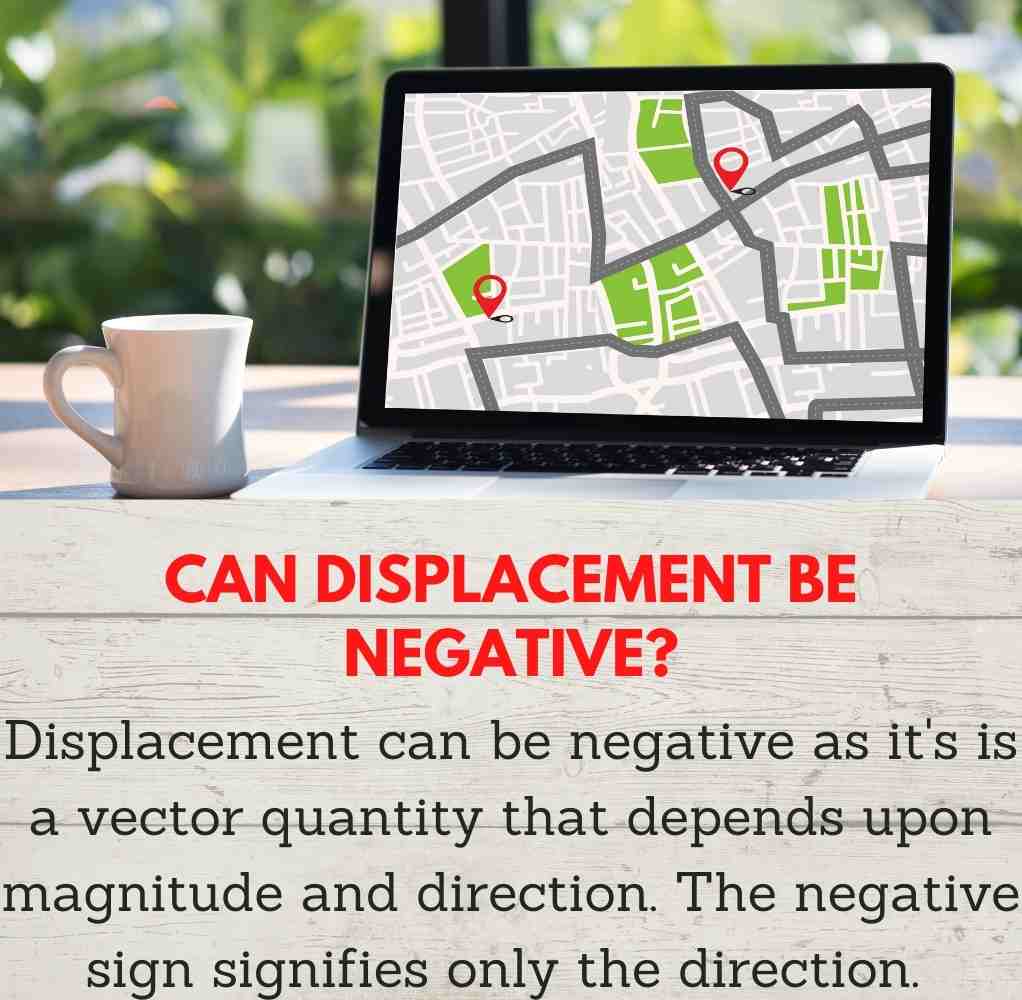Distance is the total length of the path travelled by an object, while displacement is the change in position of an object from its starting point to its ending point, including the direction.
For example, imagine you’re walking from your house to the park. The distance you cover is the total length of the path you take from your house to the park, regardless of the direction you take or whether you backtrack.
Displacement, on the other hand, is the change in your position from your starting point to your ending point, taking into account the direction. So, if you walk straight to the park from your house, your displacement is the distance between your house and the park, in a straight line. But if you take a detour on the way back, your displacement will be different from the distance you covered.

Joke about the Confusion between Displacement and Distance 🙂
Why did the physics student confuse distance and displacement?
Because he got lost and couldn’t find his way back to his starting point, his displacement was zero, but his distance travelled was a lot!
Difference between Distance and Displacement
| # | Distance | Displacement |
| 1. | A vector quantity can be positive, negative, or zero depending on the direction of the change. | The total length of the path travelled by an object. |
| 2. | Measured in units such as meters, kilometres, miles, etc. | Measured in units such as meters, kilometres, miles, etc. |
| 3. | A scalar quantity is always positive. | Example: If you walk around a circular track of a radius of 1 kilometre and end up at your starting point, your displacement will be zero since your final position is the same as your initial position. |
| 4. | Example: If you walk around a circular track of a radius of 1 kilometre, the distance you cover will be 2π kilometres, regardless of your starting and ending points. | Example: If you walk around a circular track of a radius 1 kilometre, the distance you cover will be 2π kilometres, regardless of your starting and ending points. |
| 5. | Example: If you walk from point A to point B, which is 10 meters away, your distance covered is 10 meters, regardless of the direction you take. | Example: If you walk from point A to point B, which is 10 meters away, your displacement is also 10 meters, but in the direction of B, if you walked directly towards B. If you took a different path, your displacement would be different. |
| 6. | Represents the actual path taken by an object. | Represents the straight-line distance and direction from the starting point to the ending point. |
Sample Problem with Solution
Emma is playing in a park with her friends. She starts at a tree near the entrance of the park and walks to a playground at the other end of the park. She then walks back to the same tree.
Let’s calculate the distance and displacement of Emma’s walk:
- Distance: The total length of Emma’s walk is the distance she covered. To calculate this, we need to add the distance she walked to the playground and the distance she walked back to the tree. Let’s say the distance from the tree to the playground is 100 meters and the distance from the playground back to the tree is also 100 meters.
Therefore, the distance Emma covered is:Distance = 100 meters + 100 meters = 200 meters - Displacement: The displacement is the straight-line distance from Emma’s starting point to her ending point, taking into account the direction. In this case, Emma starts and ends at the same point, so her displacement is zero. Even though she walked a distance of 200 meters, her starting and ending points are the same, so her displacement is zero.
Displacement = 0 meters
Examples of Distance vs Displacement
- Walking a dog: The distance is the total path walked, while displacement is zero if the dog returns to its starting point.
- Driving a car: Distance is the total length of the road taken, while displacement is the straight-line distance and direction from the starting point to the destination.
- Running on a treadmill: Distance is the total distance covered, while displacement is zero, as there is no change in position relative to the machine.
- Hiking on a mountain: Distance is the length of the trail followed, while displacement is the straight-line distance and direction from the starting point to the destination.
- Swimming in a pool: Distance is twice the length of the pool, while displacement is zero if the swimmer returns to their starting point.
More Links
Energy-The Ability to do Work| Daily Life Examples
Velocity Formula & Definition| Real-Life Examples
Basic Physical Quantities | Definition and Examples
Mass vs Weight| Difference and Solved Problems
Angular Displacement Formula| Easy Examples
Definition of Work in Physics| Work Formula
- BCl3 Lewis Structure in four simple steps - November 1, 2023
- PH3 Lewis Structure in four simple steps - October 8, 2023
- PF3 Lewis structure in four simple steps - September 24, 2023



